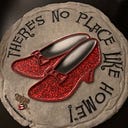Member-only story
How Your Own Childhood Trauma Affects Your Children
The Results of the Research May Surprise You
How many of you are aware that childhood trauma in your life has distorted your genetic structure and DNA?
As an Early Childhood Specialist, I take ongoing training on brain development and trauma related behaviors. It is part of my role in Children’s Services in Canada.
Over the past two years, we have focused on trauma in early childhood, and the trauma of children’s parents, as children. The latest research has provided child care operators and staff a new edge in how to handle extreme behaviors in children, as well as helped to assess the developmental needs of children in their care.
The research has created a whole new perspective in the early childhood field, and it needs to be shared.
This is Your Brain:
If you have suffered trauma of any kind, in your childhood, you may be passing the genetic markers on to your own children.
Trauma marks our brains with scars, that create mutated genes that can, and most likely will, be passed on to your babies.
